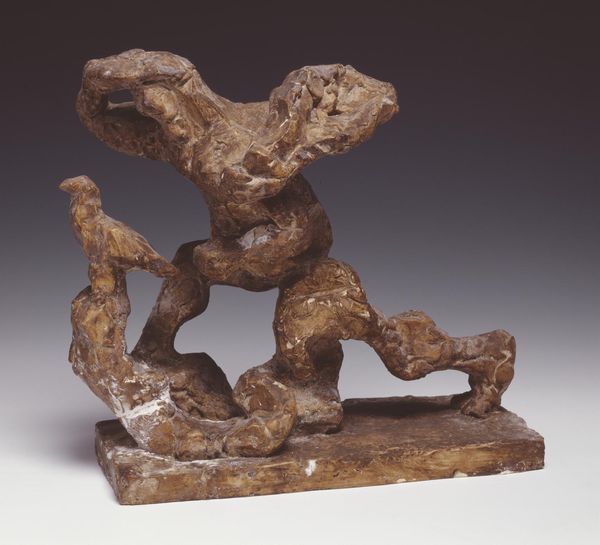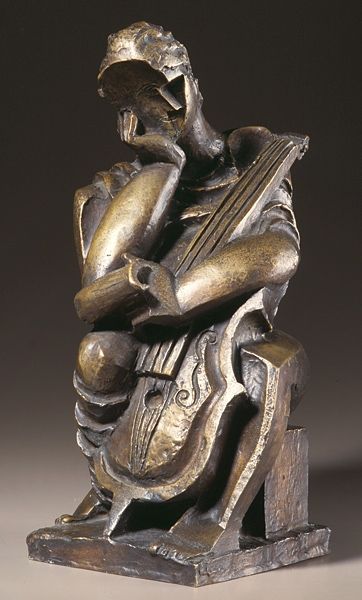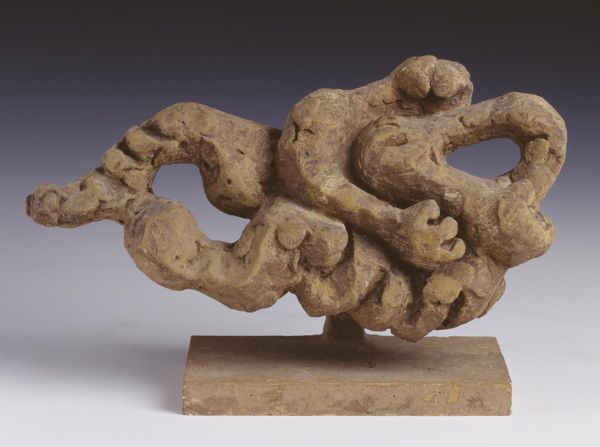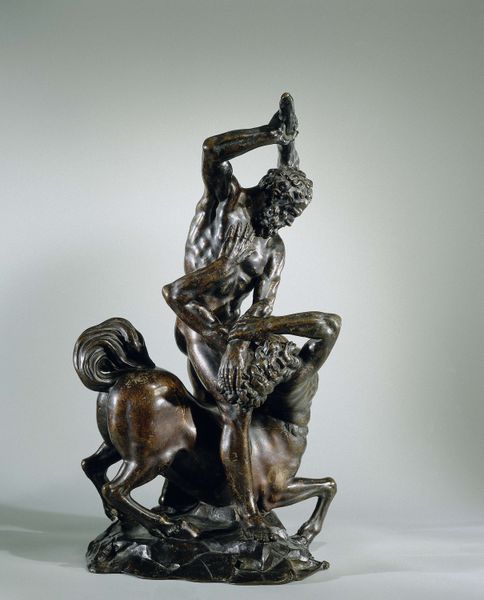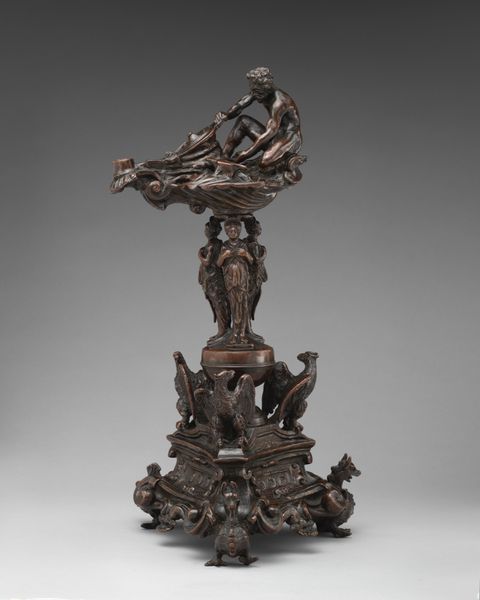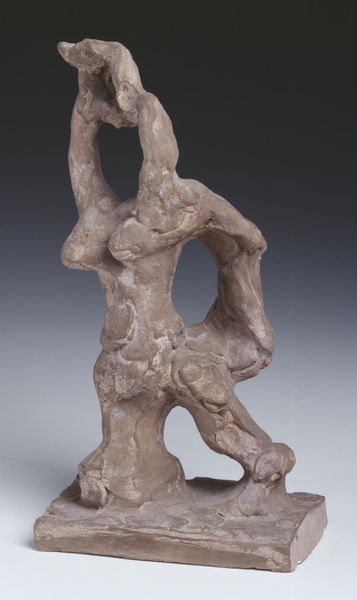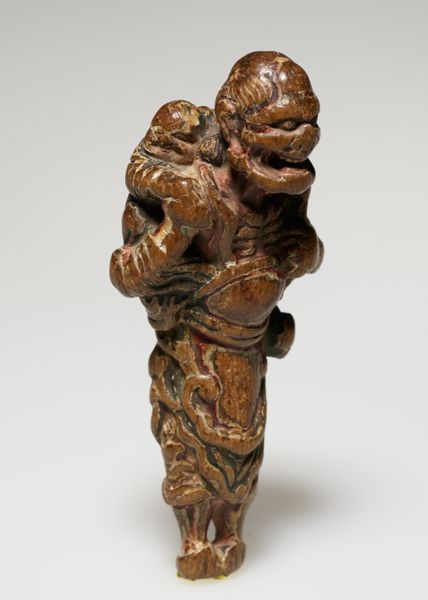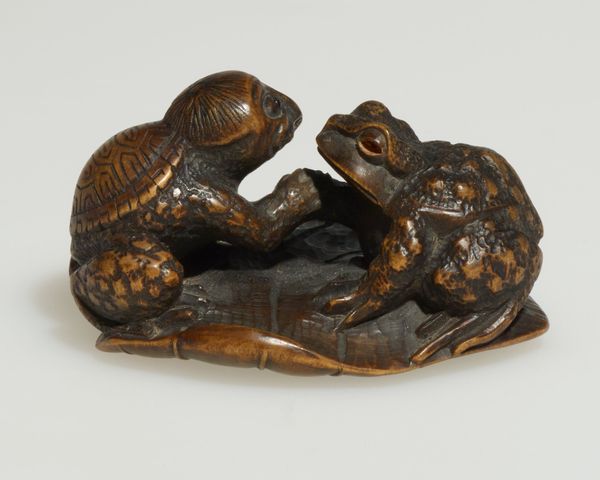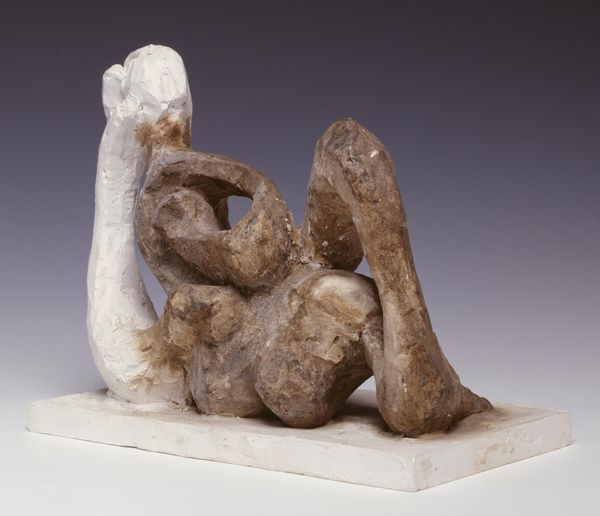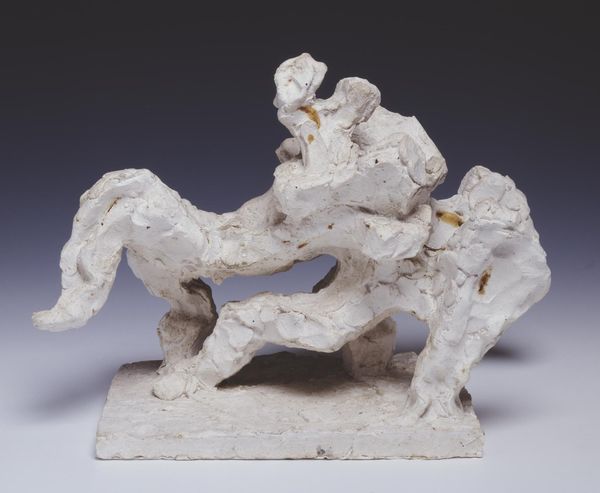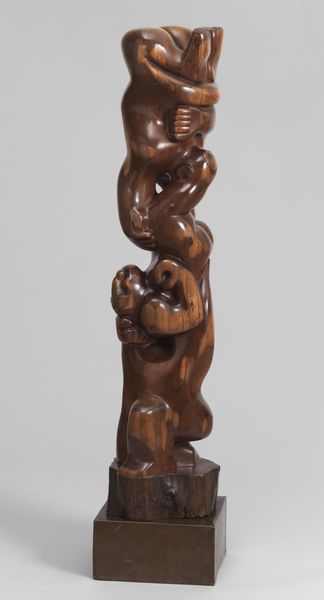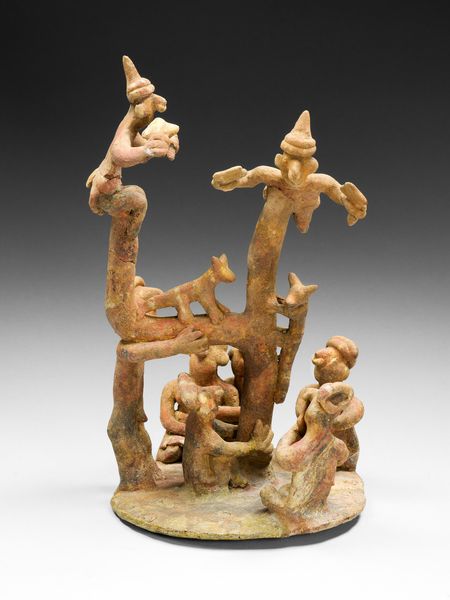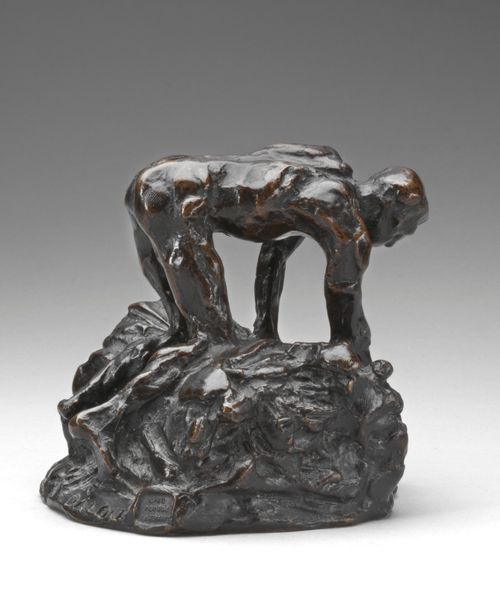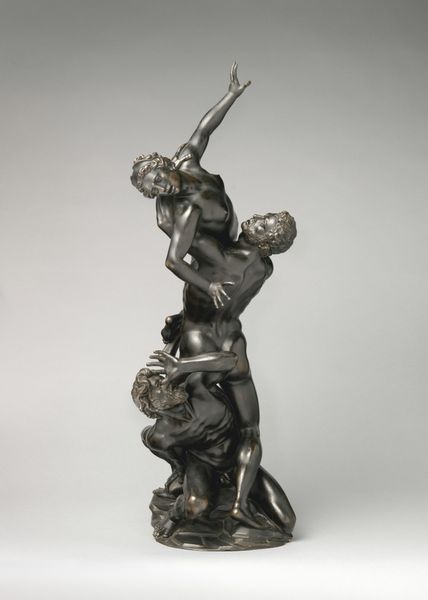
carving, sculpture, wood
#
organic
#
carving
#
sculpture
#
asian-art
#
sculpture
#
wood
Dimensions: 1 3/16 x 4 3/16 x 1 5/8 in. (3.02 x 10.64 x 4.13 cm)
Copyright: Public Domain
Editor: This wooden sculpture, a brush rest attributed to Shen Ch’uan-lin and dating to the early 18th century, is remarkably detailed. The organic shapes of branches and flowers give it a lifelike quality, but also something more symbolic. What stands out to you? Curator: I see layers of cultural memory embedded in these forms. Bamboo, for example, has long symbolized resilience and integrity in Chinese art and philosophy, traits prized in scholars and officials. These blossoms may signify prosperity or a longing for renewal. Editor: So, the choice of flora isn't just aesthetic? Curator: Rarely. Consider how scholars in the Qing Dynasty, possibly the original owner of this brush rest, might have identified with these images. What feelings might they evoke? Editor: A connection to nature, definitely. And a reminder of their values, perhaps inspiring them during long hours of study. Were brush rests common objects? Curator: Yes, but this one is distinct because of its intricate carving, suggesting the owner possessed wealth, taste, or desired moral alignment. It elevates something functional into a symbol. Editor: It’s interesting how an object like this can speak volumes about the person who used it and the cultural values of the time. Curator: Precisely. Through art, cultural continuity is subtly communicated and reinterpreted over time. That is what continues to draw me in. Editor: I see it now. The symbols carry layers of meaning that link us to a particular time and place, and connect it with our current experiences.
Comments
minneapolisinstituteofart about 2 years ago
⋮
This brushrest is a recognized masterpiece of Shen Chuanlin, whose square seal is carved into the side of the work. Meticulously fashioned from bamboo root, the piece features a finely detailed blossoming plum branch and a spray of bamboo, two plants that symbolize scholarly virtue. The miniature sculpture can support three brushes simultaneously. Brushrests allowed painters to set down a wet brush so its bristles would not touch a table or stain paper. Artists made brushrests from a variety of materials, including stone, metal, and ceramics. This refined example, executed in "organic taste" (an appreciation for natural forms) emphasizes contemplative communion with nature.
Join the conversation
Join millions of artists and users on Artera today and experience the ultimate creative platform.
